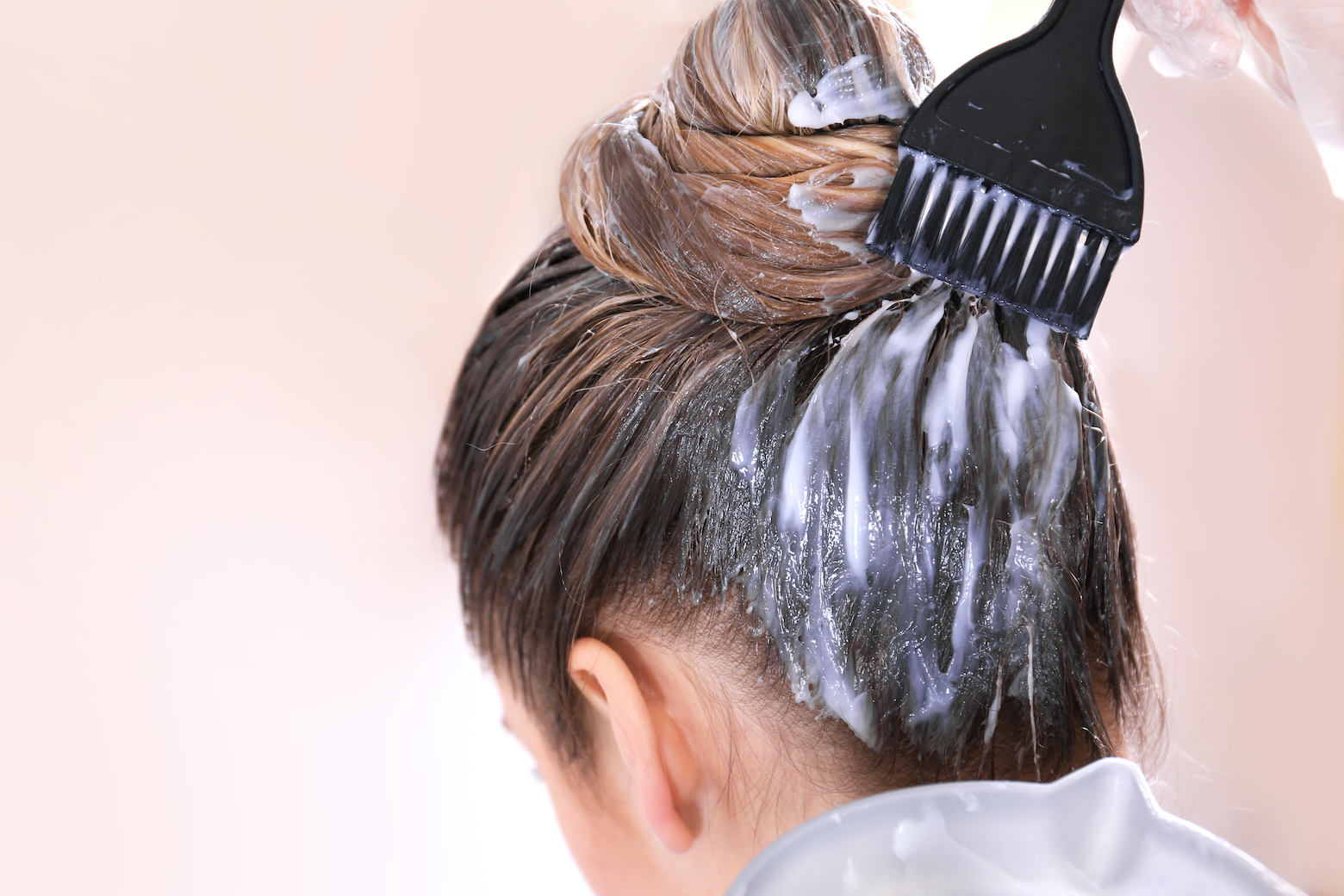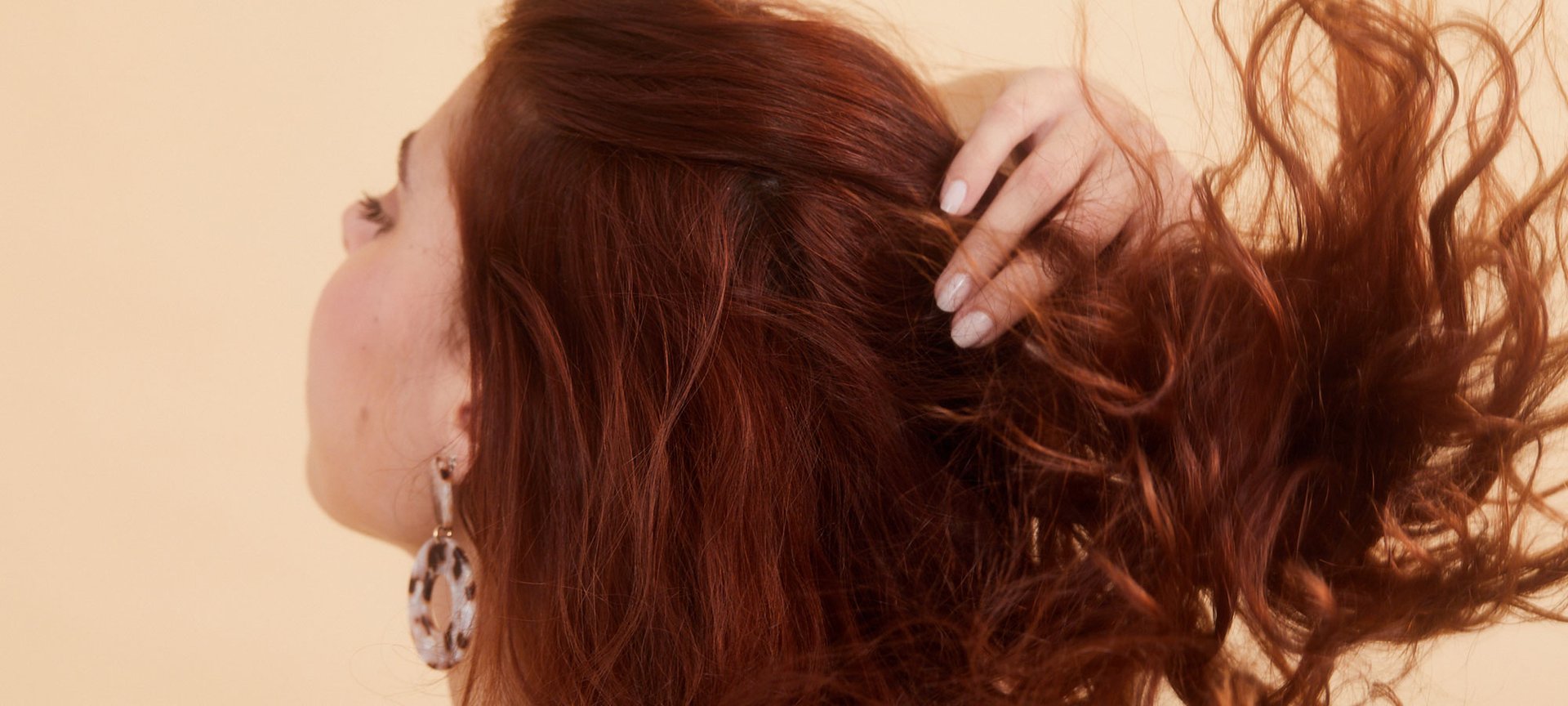Have you ever stared into the mirror, wondering if your roots are showing again? Or perhaps you’ve felt the allure of a new shade, contemplating the journey from your natural color to a bold and vibrant transformation. The world of hair color is a fascinating one, filled with endless possibilities and a spectrum of shades waiting to be explored. But amidst the choices, one question remains consistent – how often should you color your hair?

Image: www.styleseat.com
The answer, of course, is more nuanced than a simple number. It depends on your individual hair type, desired shade, and how much time and effort you’re willing to dedicate to your color. From the frequency of touch-ups to the science behind color fading, this guide delves into the world of hair coloring, offering insights to help you make informed decisions about your mane’s journey.
The Spectrum of Color: Understanding Hair Dye
Before diving into the frequency of coloring, it’s crucial to understand the basics of hair dyes and their impact on your strands. Hair dyes generally fall into two categories: temporary and permanent.
Temporary Hair Dyes: A Faded But Fun Adventure
Temporary hair dyes are known for their milder approach, offering a temporary color change that washes out with each shampoo. Think of them as a fun and fleeting experiment, allowing you to explore different colors without making a long-term commitment. Popular temporary options include:
- Hair Chalk: This trendy method involves applying colored chalk to your strands, creating bold streaks or subtle highlights. It washes out easily, making it a perfect option for festivals or special occasions.
- Hair Mascara: Available in a range of shades, hair mascara is applied directly to individual strands, similar to applying mascara to your eyelashes. It’s a great way to add a touch of color without the fuss of an all-over dyeing process.
- Hair Color Sprays: These sprays quickly transform your hair color, offering a fun and temporary solution for an instant makeover. The color can be sprayed discreetly on the roots or applied throughout the entire head of hair.
Permanent Hair Dyes: A Long-Lasting Transformation
On the other end of the spectrum lie permanent hair dyes, which penetrate the hair shaft and deposit color molecules directly into the cortex. These dyes offer a longer-lasting color change, gradually fading over time. Permanent dyes come in a variety of forms, including:
- Box Dyes: These readily available dyes are known for their affordability and convenience, but they often lack the ability to completely cover gray hair or achieve complex color transformations.
- Salon Dyes: Professional stylists use salon-quality dyes for a more customized color experience. These dyes often contain higher concentrations of pigments and are designed to achieve specific color results.
- Ammonia-free Dyes: A gentler option that uses a milder base to deliver color. While they may not provide the same level of pigment intensity as ammonia-based dyes, they are more forgiving on the hair and can be a good option for those with sensitive scalps.

Image: www.lorealparisusa.com
The Science Behind Faded Color: Why Roots Appear
As time passes, even the most vibrant hair color starts to fade. This natural course of color loss stems from a few key factors:
- Hair Growth: The most noticeable sign of fading color is the appearance of roots. As your hair grows, the new, uncolored strands at the scalp contrast with the colored parts, creating a noticeable line of demarcation.
- Washing and Styling: Each shampoo session and styling heat exposure can gradually strip away some of the color molecules, contributing to fading.
- Exposure to Sunlight: The sun’s ultraviolet (UV) rays can bleach out color pigments, accelerating the fading process.
The Art of Maintaining Your Hue: Balancing Frequency and Results
Now that you understand the mechanics of hair color, let’s delve into the frequency of coloring. The ideal schedule depends on a variety of factors, including:
- Your Natural Hair Color: Those with lighter natural hair colors tend to see fading more quickly than individuals with darker hair.
- Desired Shade: Bold colors, such as reds and vibrant blondes, often require touch-ups more frequently than subtle shades.
- Hair Growth Rate: Individuals with faster hair growth rates will see their roots appear sooner, prompting more frequent touch-ups.
- Personal Preference: Ultimately, the frequency of coloring boils down to your own preferences. Some individuals embrace their roots as a natural part of their style, while others prefer a consistently even color.
Finding Your Perfect Frequency: A Practical Guide for Every Hair Type
Here’s a practical guide to help you find the appropriate coloring frequency for your specific situation:
For Those with Lighter Hair Colors:
Individuals with lighter hair colors often require more frequent touch-ups. Blondes, for example, can experience visible root regrowth as early as 3-4 weeks after a coloring session. To maintain a consistent look, a monthly touch-up is often recommended. However, opting for a “lived-in” style, which embraces a softer line between colored and uncolored hair, can extend the time between appointments.
For Those with Darker Hair Colors:
Individuals with darker hair colors generally enjoy longer stretches between touch-ups. The contrast between roots and colored strands is less noticeable, allowing for a 6-8 week timeframe between appointments. However, the rate of color fading can still vary depending on the desired shade and individual hair growth rate.
For Those with Gray Coverage:
Covering gray hair often requires more frequent visits to the salon. The regrowth of gray hair is quite visible, and root touch-ups are typically required every 4-6 weeks to maintain a consistent look.
For Those with Red Hair Colors:
Red shades, known for their vibrancy, can fade quickly. Maintaining the intensity of red hair often requires touch-ups every 3-4 weeks. The use of color-safe shampoos and conditioners can help to prolong the life of your red hue.
Maintaining Your Color at Home: Tips and Tricks
While salon appointments offer professional expertise, there are techniques you can use at home to extend the longevity of your color:
- Choose Color-Safe Hair Products: Opt for shampoos, conditioners, and styling products that are specifically designed to protect colored hair. These products are formulated to prevent color fading and keep your strands looking their best.
- Minimize Heat Styling: Excess heat from styling tools can damage the hair shaft, leading to color fading. Use heat protectants whenever possible and minimize the use of styling tools.
- Use a Clarifying Shampoo: A clarifying shampoo can help to remove product buildup and cleanse the hair, allowing the color to remain vibrant for longer. However, use this type of shampoo sparingly as excessive clarifying can strip the hair of its natural oils.
- Embrace Root Touch-Up Sprays: Root touch-up sprays are a convenient option to refresh the color between appointments. They come in a variety of shades and are available in both temporary and semi-permanent formulas.
- Consider a Color-Depositing Conditioner: A color-depositing conditioner can be used to refresh your hair color between salon visits. They offer a gentle way to add tone and depth to your existing color while keeping the hair hydrated.
The Future of Hair Color: Innovations and Trends
The world of hair color is constantly evolving, with new dyes, techniques, and trends emerging all the time. Here’s a glimpse into the future of coloring:
- Natural Dye Alternatives: As people seek more natural and sustainable options, there’s a growing trend toward hair coloring using natural ingredients like henna and indigo. These natural dyes offer a gentler approach to coloring while embracing an earth-friendly approach.
- Personalized Hair Color: The use of AI and technology is leading to personalized hair color solutions. Companies are developing AI-powered apps that help clients choose the perfect color based on their individual skin tone and hair type.
- Color-Cycling: Gone are the days of sticking to one singular shade. Color-cycling, a technique that involves gradually transitioning between different shades, is gaining popularity. It allows you to experiment with different looks without committing to a permanent color change.
How Often Do You Color Your Hair
In Conclusion: Your Hair Color, Your Rules
The frequency of coloring your hair is a personal decision that should align with your individual needs, preferences, and desired look. Whether you’re embracing a bold transformation or subtly enhancing your natural shade, understanding the factors that influence color fading empowers you to make informed choices about your coloring journey. From embracing natural dye alternatives to experimenting with color-cycling, the world of hair color is filled with exciting possibilities. So, go ahead and explore the spectrum of shades, knowing that your perfect hue awaits, ready to be unleashed!





